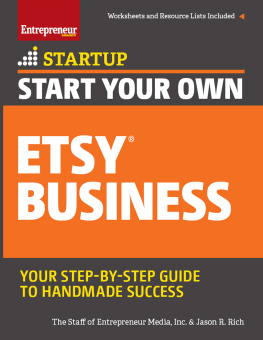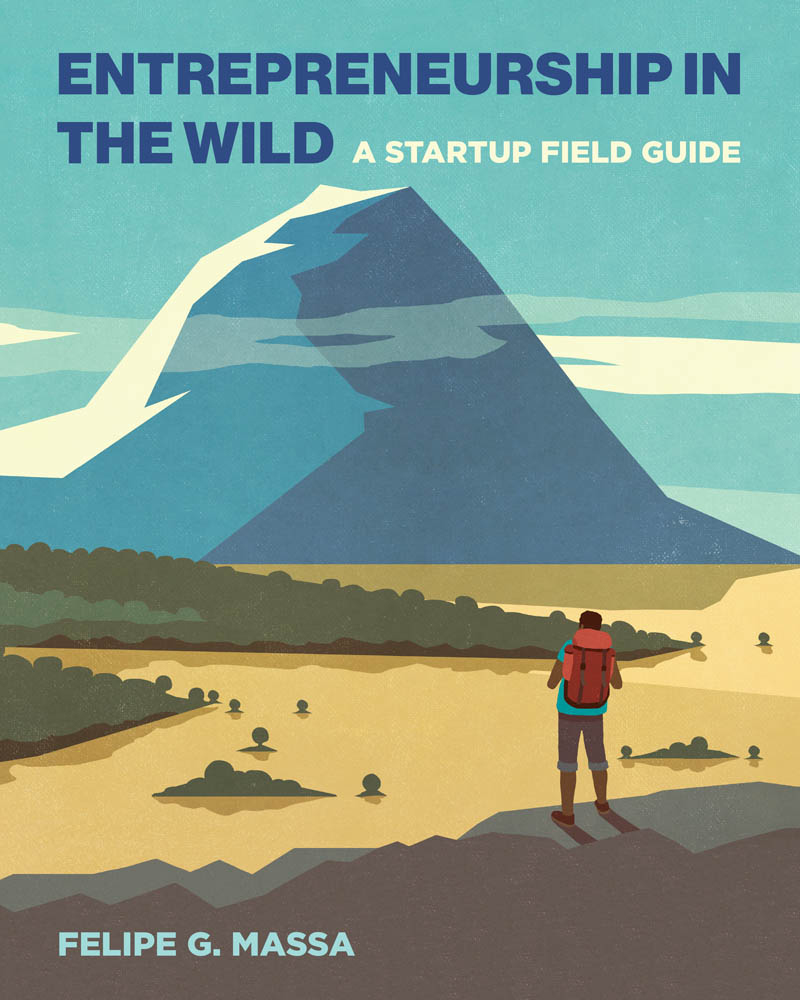.
.
.
.
Welcome
By cracking open this book you have taken a meaningful step toward making a mark in your community. You have gone from being an employee, a student, or a part-timer to becoming a founder. Founders stand apart because they brazenly declare they will forge a path that others will follow. There are no special plaques or ceremonies needed for someone to become a founder, no entry fees or golden tickets. Instead, founders need a commitment to persevere and learn from challenges large and small. They might have all the fervor needed to start a business but not know where to focus their energy. They might have extraordinary skills but no experience applying these skills in the startup context. The result is often frustration and, eventually, a failed venture.
This book will help founders launch their startup in a way that wastes less time and consumes fewer resources. Instead of suggesting a field of dreams approaches to entrepreneurship education that couple learning by doing with the important work of familiarizing oneself with essential concepts, relevant examples, and tools needed to put lessons into practice as soon as possible. Entrepreneurs who follow this approach are immersed in the activity of starting a business and are guided by the dual goal of successfully developing their startup and understanding the principles underlying successful entrepreneurship. This book details this systematic approach over the course of ten chapters, each demanding hands-on effort from founders, from the initial foray into generating an idea to the meticulous crafting of a pitch designed to inspire external audiences.
It is important to note that this book does not do the work for you. Instead, it helps you understand when you have done too little or when it is time to move on. It pushes you to feel more confident in the steps you are taking as you advance through what may feel like an unfamiliar and untamed wilderness. Hence the title, Entrepreneurship in the Wild: A Startup Field Guide. I find the metaphor of the explorer braving the wilderness appropriate for founders launching startups, for many reasons. They must venture forth, charting new paths while avoiding traps and overcoming challenges. They must also navigate using the tools and practices developed by their predecessors who succeeded in starting businesses and the lessons learned by those who failed. That is why, unlike a traditional textbook, this book is designed as a field guide that uses the language of wayfinding. The process of wayfinding involves four discrete stages that apply as easily to the wilderness of startup ecosystems I use the four stages as guideposts to organize each chapter and keep you on track:
- Orientation is the attempt to determine ones location relative to objects that may be nearby and the desired destination. We begin every chapter with a short case study and an introduction intended to orient founders as to their location relative to that of other founders who have had similar experiences.
- Route decision entails the selection of a course to a destination. The book guides founders through a series of steps designed both to convey important entrepreneurship principles and to advance a founders progress in the entrepreneurial process. Following these steps, founders will make decisions about how to proceed in establishing their startup.
- Route monitoring involves checking to make sure that the selected route is heading toward the destination. In each chapter, as founders reach milestones, they are asked to reflect on and conduct due diligence regarding their decisions.
- Destination recognition occurs when an important milestone is reached and new itineraries can be undertaken. In this stage, founders consider what they have accomplished and think carefully about any additional steps they might take before moving on to the next step. Every chapter provides references to external resources and time-tested advice that will help you do just that.
Is This Book Right for Me?
This book targets a broad audience of aspiring entrepreneurs and entrepreneurship educators looking for an accessible, structured approach to new venture development. For more than eight years, the content of the book has been tested by undergraduate, graduate, and executive program students. It has been used and reused by entrepreneurs who lack the structure of a formal startup development program but who wish to try their hand at launching a business. It has also been useful to serial entrepreneurs who have a lot of experience starting businesses but who want to approach the process in a more intentional and measured way.
The tools provided in this book are not exclusively for founders; they can also be deployed by innovators who have no intention of starting their own business and prefer instead to use the entrepreneurial process to bolster a corporate innovation project or build support for organizational change. Even though the books lexicon and cases focus on the founders experience, most of the tools provided are agnostic as to whether you are the person starting the business or a change agent helping develop an existing business.
This book is not, however, for people who want advice on how to scale up their startup after receiving investment. The book guides entrepreneurs through the process leading up to your pitch to investors and does not cover the ins and outs of day-to-day management of a new business or the process of expanding beyond a single market. It is also not designed to be a single source of information for those starting a business. Throughout the book I encourage founders to immerse themselves in their local entrepreneurial ecosystem and to read broadly.
Why Now?
The idea for this book was born several years ago when I was searching for a textbook to adopt for an entrepreneurship class. I wanted to design a class that was as hands-on as possible and that would allow students to experience, in a grounded and research-supported way, what it was like to launch their own venture. Unfortunately, there were few books out there that balanced pragmatic, experiential approaches with more academically rigorous content. I decided to forgo assigning a textbook and built a class out of articles and a set of worksheets I wrote myself. By writing the materials myself, I could be sure that the content was as up-to-date and empirically validated as possible while still being useful to people starting very different types of businesses, ranging from nonprofits to high-growth startups. Reflecting the impetus for its creation, this book is not as comprehensive or as involved as a textbook and is not as light on empirical support as many of the practitioner-oriented books in the market. Its designed to be ideal for my own experiential approach to teaching, for startup incubators that cant offer full semester classes, and for people who want to experiment with starting a business but dont want to commit to a full course of study in entrepreneurship. This book is also different from other websites, blogs, and books that are available to aspiring entrepreneurs, for a variety of reasons:








